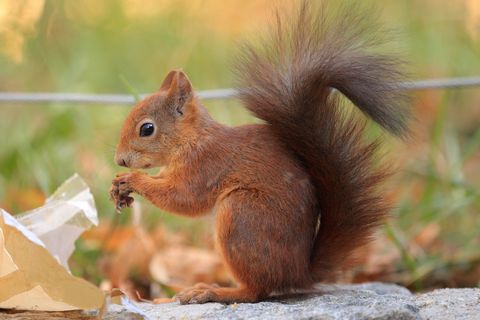Learning
The Benefits of Early Childhood Nature Experiences
By Hanne S. Finstad, founder of Scientist Factory and Ph.D.
Children need to experience nature to love it and care for it. Parents in cities might find it challenging to provide their children with early childhood nature experiences. Luckily, kindergartens and pre-schools can be essential in ensuring that city kids get to experience nature. But how?
I recently visited a nature kindergarten in Norway. The children in this program spend three years in the woods before starting school, getting many unique experiences. The visit made a strong impression on me. I realize that it isn’t practically possible for all children to attend nature kindergartens. Most people live in relatively densely populated areas. How can we give city kids those meaningful early childhood nature experiences?
The key is to broaden the definition of what counts as nature. Where exactly is the border between nature and non-nature, anyway? A few years ago, I posed this question to a group of teens when Scientist Factory arranged a field trip in Oslo. We began the field trip at the University of Oslo and made our way to a park. We explored various natural phenomena and discussed what nature is. The green hills around the easy were easy to classify as nature. But what about the grass underneath our feet and everything alive in gardens and parks? Was that nature, too? What about the wood, rock, and other materials that make up the houses in any city? We gradually realized that there is a difference between the artificial and the natural. We found traces of both everywhere in the city.

We found moss, lichen, and weeds in between stone structures. Life was everywhere. We saw birds, squirrels, flowers, trees, and innumerable insects. There is no need to leave the city to experience nature, and kindergartens in cities can offer many rich nature experiences. The reasons to do so are many.
The nature experiences we have as children affect our attitude towards nature later in life. A study from Japan in which scientists interviewed more than 1000 people about their childhood experiences with nature and their attitudes towards nature and ecology as adults confirms this. Children who had many nature experiences also felt a greater sense of responsibility towards nature as adults. For example, they were more accepting of dangerous wasps and scary bores, understanding that they have a place in nature.
Scientists in South Korea had similar findings in a study that followed 104 third-graders who learned about bees for three weeks. The children learned about the bees’ vital role in nature, visited a beehive, tasted different types of honey, and made candles from beeswax. Many of the children were very scared of bees initially, even though none of them had ever been stung by a bee. These attitudes changed as their knowledge deepened. The children’s interest in and joy for nature also increased. These findings ring true for us in Scientist Factory. We have seen how children’s attitudes towards nature change when we teach them about spiders, a part of our summer school curriculum for years.

Moreover, playing outdoors provides excellent physical activity while it trains cognitive and social skills. Time outdoors is crucial in our times when many children spend a lot of their time in front of electronic devices from a young age. Experiences in nature can give children knowledge that stretches beyond knowing facts and numbers. The goal is not merely to master science as a subject but to see larger connections in ecology and to experience that we find these connections in the city and the forest.
Nature activities for the city
- Explore insects and other small animals such as ants and spiders
- Study birds and feed them during winter
- Follow the leaf cycle of a tree throughout the year
- Grow things together
- Pay attention to the weather and make a weather station
- Practice making a fire in a fire pit
- Have chicens
- Get an aquarium/pond with fish
- Look for insects and other small animals in a brook or a river
Sources
- Hosaka, T., Sugimoto, K., Numata, S., (2017). Effects of childhood experience with nature on tolerance of urban residents toward hornets and wild boars in Japan. PLoS ONE, 12(4)
- Cho, Y., Lee, D., (2017). ‘Love honey, hate honey bees’: Reviving biophilia of elementary school students through environmental education program. Environmental Education Research
- Learning outdoors: the Forest School approach, L O`Brian, Education, vol 37, s 45-60, 2009
- Close encounters with nature in an urban kindergarten: a study of learners inquiry and experience. F Ghafouri, Education, vol 42, s 54-76, 2014
